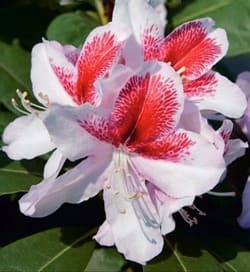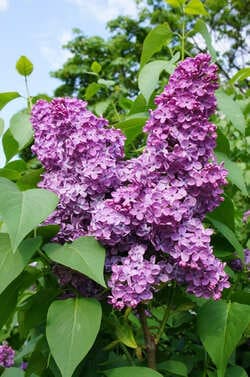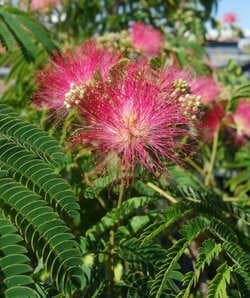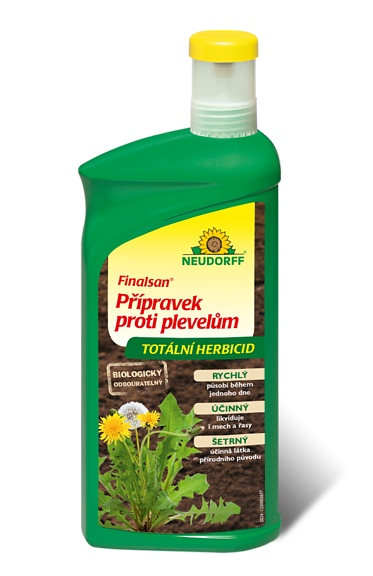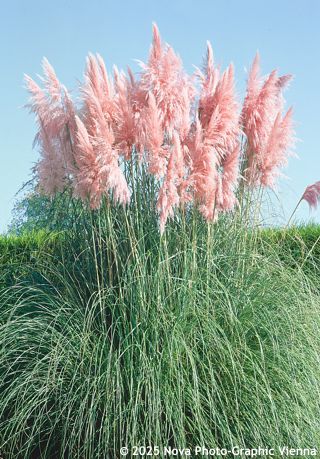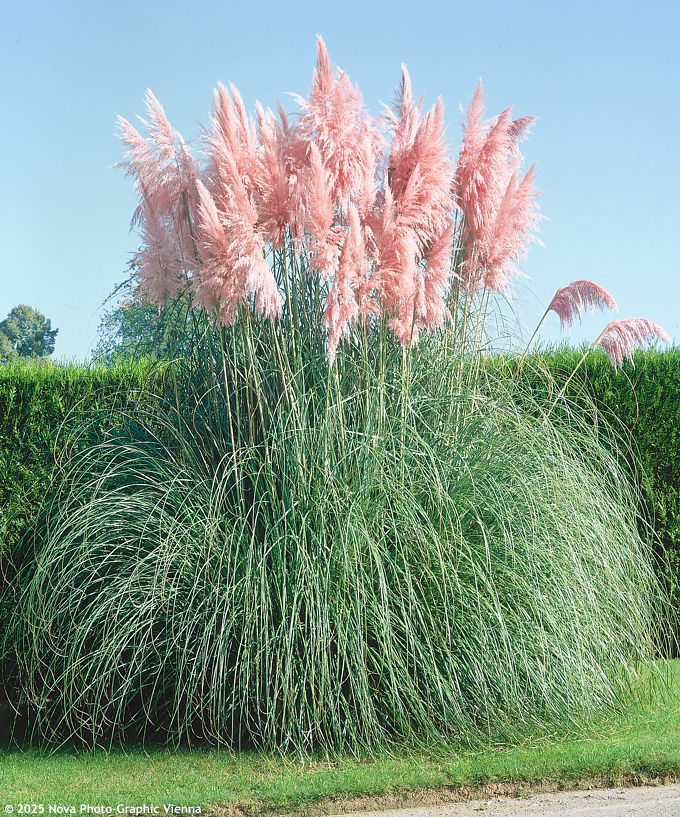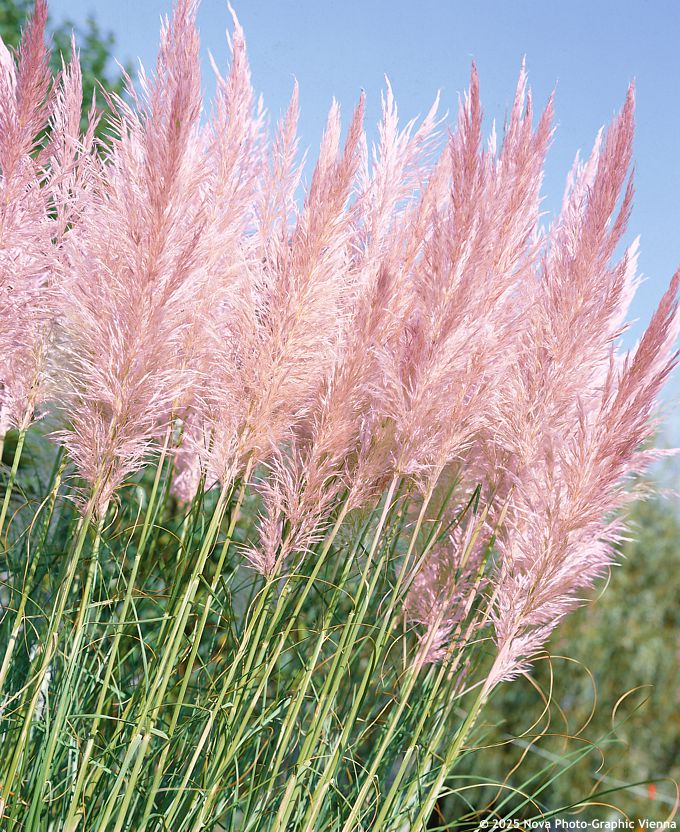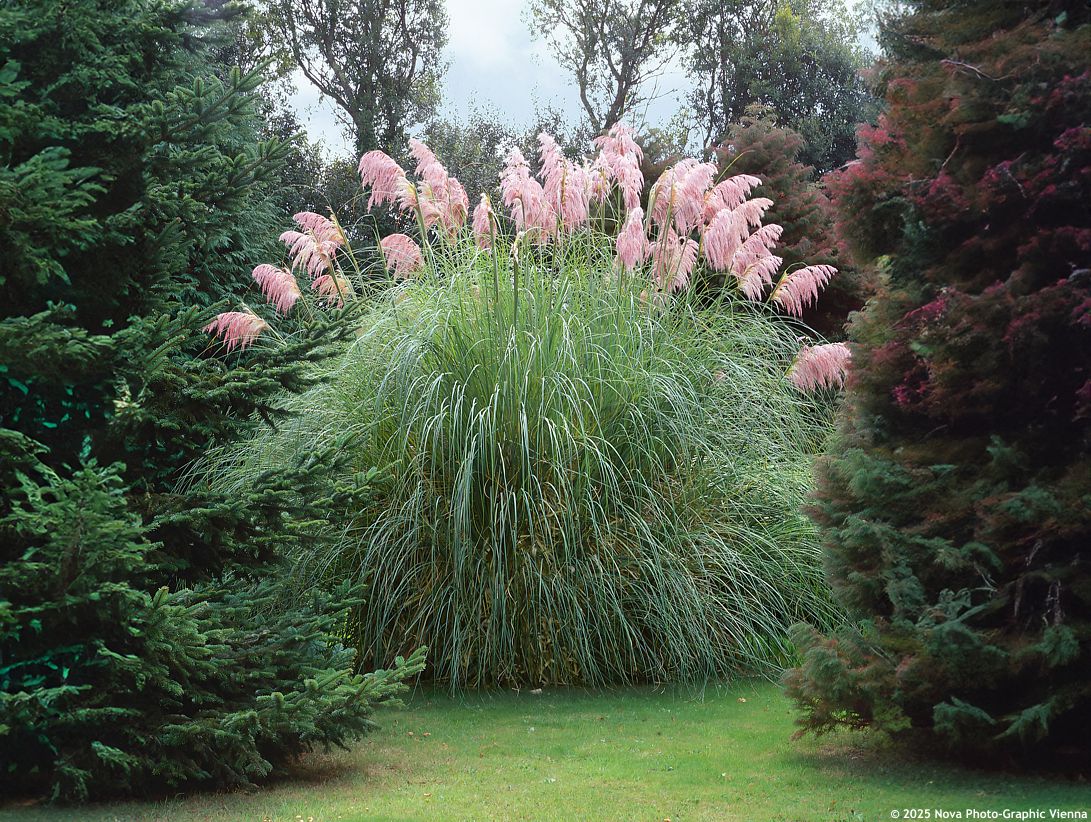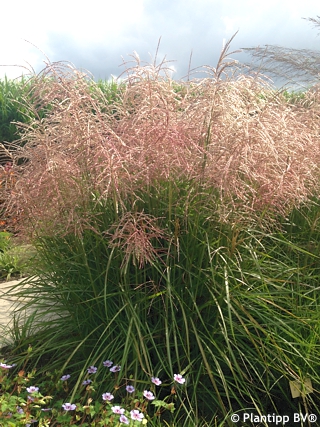Cortaderia selloana 'ROSEA' Pampas grass
Cortaderia
Cortaderia selloana is better known by its common name Pampas Grass. It was named after its origin in the South American Pampas region. This region consists of lowland grassy plains covering over 1,200,000 square kilometres, stretching across southeastern Argentina, the entirety of Uruguay, and a small part of Brazil. Nowadays, it spreads across almost all countries in South and Central America and is even found in the southernmost states of the USA, where it is considered invasive due to its expansiveness and vitality in their climate. The genus name Cortaderia is derived from the Spanish word cortadera, meaning cutter, because its leaf edges are sharp. The species name selloana was chosen in honour of the German naturalist Friedrich Sellow (1789-1831), who explored and collected plants in Brazil from 1814 onwards and is deservedly regarded as the most important collector and expert on its flora.
Pampas Grass is one of the most spectacular and beautiful grass species ever. It is believed that Sellow sent the first seeds to England between 1817 and 1827, and the first plants were experimentally grown in the Royal Gardens at Kew near London. It was introduced to the USA only in 1848. The fashion during the Victorian era (second half of the 19th century) greatly contributed to its worldwide popularity. It was commonly planted by wealthier families in ornamental gardens in temperate climates, where its seeds easily germinated and the plants reached impressive sizes, evoking admiration and respect, and its grand flowers adorned many decorations.
Rosea is a favourite variety of Pampas Grass with pink flowers. It is possibly as large as the species – in hot climates it can grow to 3-4 meters in full bloom, while in cooler climates it reaches up to "only" slightly over 2 meters by late summer, which is still an impressive height for an ornamental grass. Its leaves are medium green tinted blue, 1.5-2 meters long, 2-3 cm wide, and the margins are finely but sharply serrated, so they can cut you like paper. They are upright when young, but before the plant produces flowering stems, the tips begin to elegantly bend, so despite the overall bulkiness, the arching clumps look soft and elegant. The flower-bearing stems are up to 2 meters high and topped with 40-90 cm long plume-like inflorescence. The plumes are abundant and a delicate pastel pink, so beware of photoshopped images showing deep pink to magenta flowers found on the internet – they are misleading. In C.E. conditions, the flowering time is September to October, yet decorating the garden even longer, until the frost.
Pampas Grass is a perfect plant for larger areas, where it fills space beautifully without needing a companion, or a stand-alone specimen in a small yard. Although it originally comes from riverbanks and moist meadows, it requires well-drained soil in countries prone to winter frost to prevent its roots from rotting in the winter in case of long-lasting waterlogging. On the other hand, it is an ideal plant for places where others do not thrive, for example, sunny areas in front of walnuts or thujas which are known for depleting all the water in the soil.
Grow it in full sun if you want to see the flowers, it can handle some part-shade only in countries with hot and long summers. Humus-rich soil if preferred, or frequent fertilization is recommended in poor soils. Although it easily adapts to drought once established, occasional watering during leaf growth and flower production will make the plant look much more beautiful and lusher. It is not picky about soil pH. Before the first snow and severe frosts, tie it firmly into a bundle to prevent wet snow from falling into its centre. In spring, after the temperature fluctuations have subsided (April), cut it just above ground level. Rosea Pampas grass is considered hardier than the species and following these instructions, your plants should be able to survive down to about -26 °C (USDA zone 5b). If you are still unsure, you can always grow it as a container plant in a large pot.
Last update 05-01-2025












